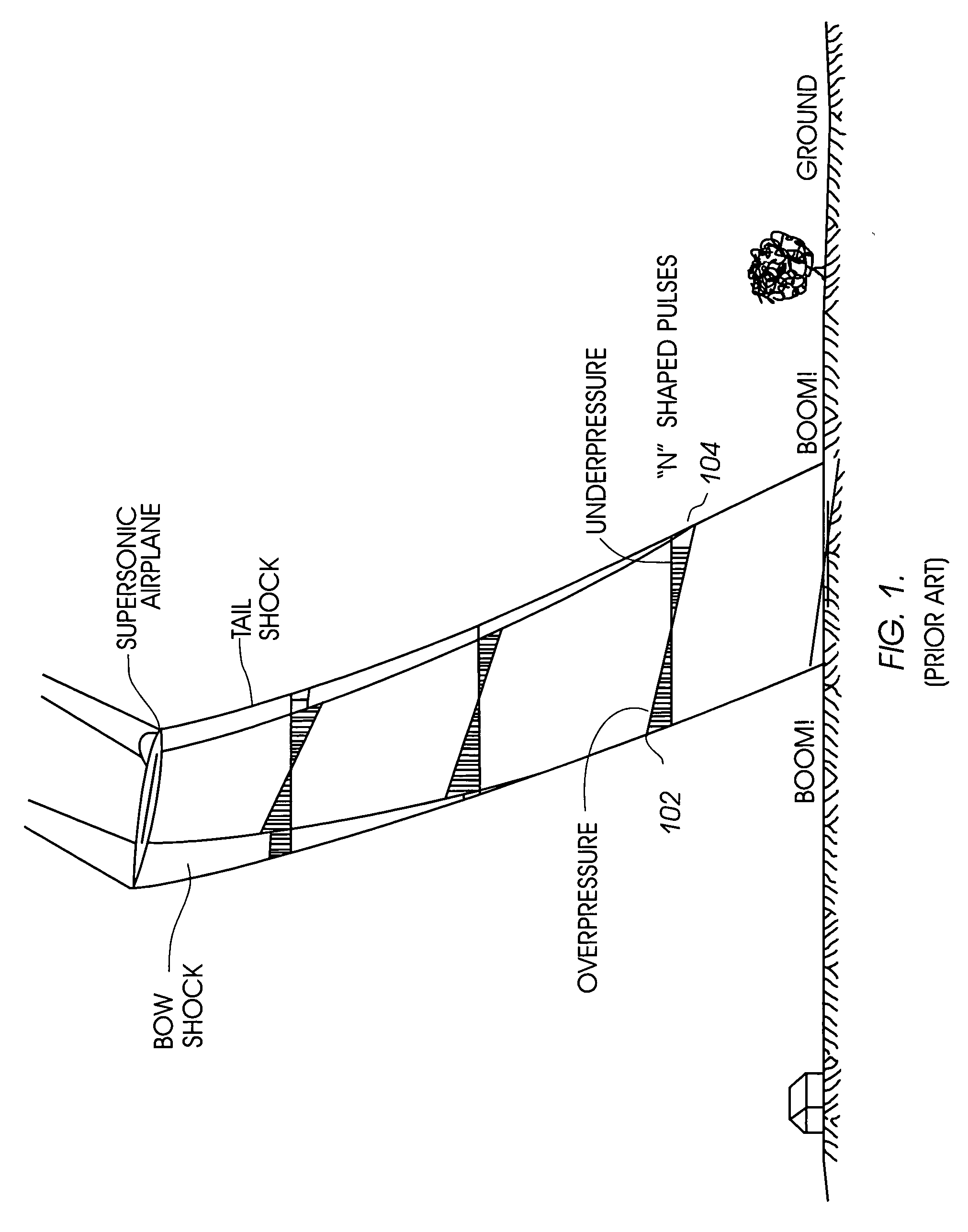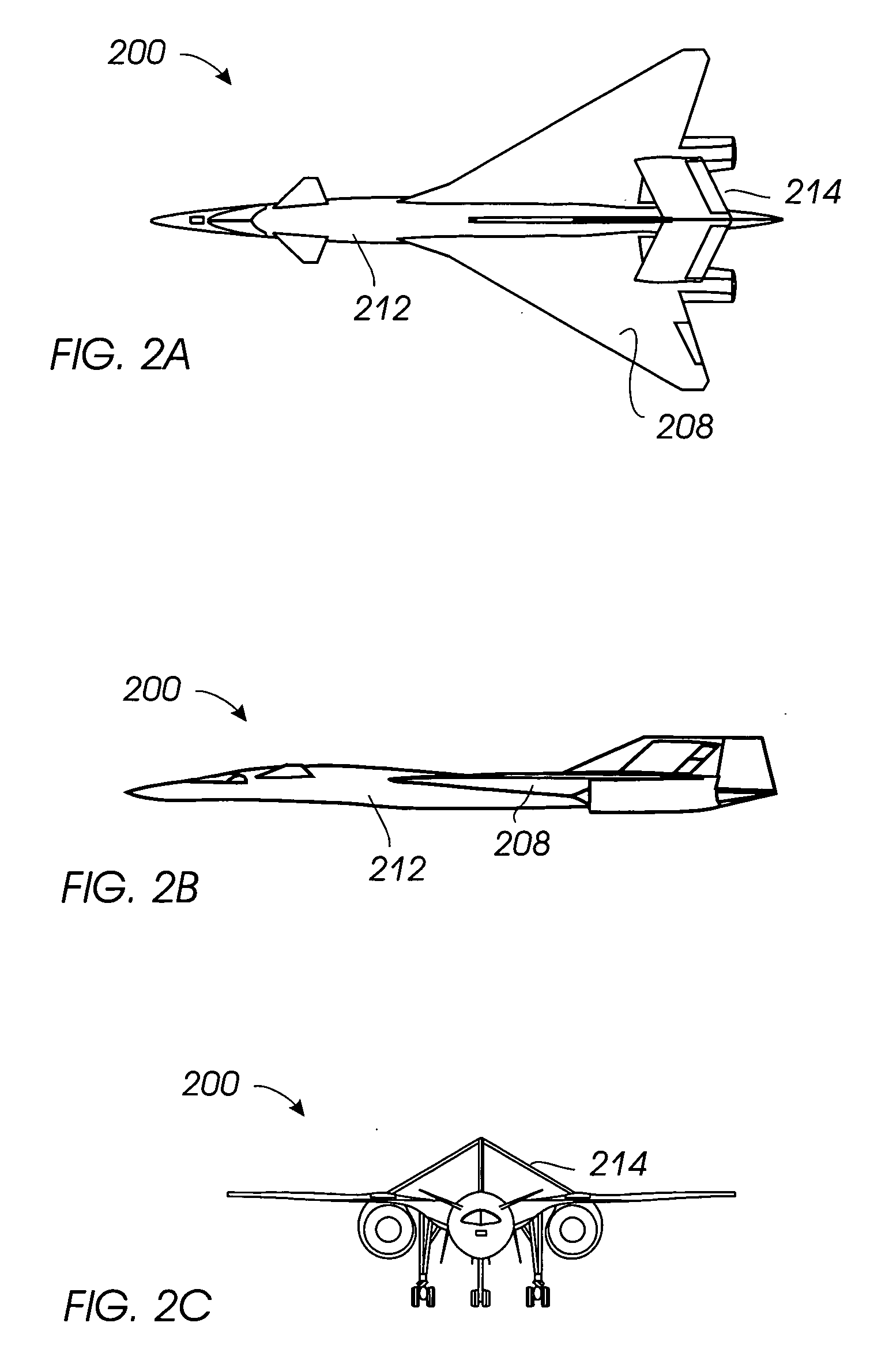Passive aerodynamic sonic boom suppression for supersonic aircraft
a supersonic aircraft and aerodynamic technology, applied in the direction of airflow influencers, fuselages, transportation and packaging, etc., can solve the problems of aircraft pressure disturbances that move at the speed of sound, objects inside rattle, and aircraft pressure disturbances to stretch out, so as to reduce the aft sonic boom ground shock strength and reduce the disturbance of sonic boom
- Summary
- Abstract
- Description
- Claims
- Application Information
AI Technical Summary
Benefits of technology
Problems solved by technology
Method used
Image
Examples
Embodiment Construction
[0050] The following description is provided to enable any person skilled in the art to make and use various embodiments of the invention, and sets forth the best modes contemplated by the inventor of carrying out the various embodiments disclosed.
[0051] Various embodiments disclosed herein use a combination of synergistic techniques to achieve reduction of the sonic boom from supersonic airplanes. A reduction of noise from sonic booms by at least 15-25 decibels is achieved while reducing the drag of a reduced boom vehicle and maintaining a practical design.
[0052]FIGS. 2A through 2C illustrate an embodiment of an aircraft 200 configured to minimize sonic boom disturbances. Aircraft 200 includes features that compress the pressure at the nose, expand pressure at the tail, and constrain the pressures between the nose and tail to weak compressions and expansions to prevent the pressure waves from coalescing. As a result, aircraft 200 can fly at supersonic speeds with significantly re...
PUM
 Login to View More
Login to View More Abstract
Description
Claims
Application Information
 Login to View More
Login to View More - R&D
- Intellectual Property
- Life Sciences
- Materials
- Tech Scout
- Unparalleled Data Quality
- Higher Quality Content
- 60% Fewer Hallucinations
Browse by: Latest US Patents, China's latest patents, Technical Efficacy Thesaurus, Application Domain, Technology Topic, Popular Technical Reports.
© 2025 PatSnap. All rights reserved.Legal|Privacy policy|Modern Slavery Act Transparency Statement|Sitemap|About US| Contact US: help@patsnap.com



